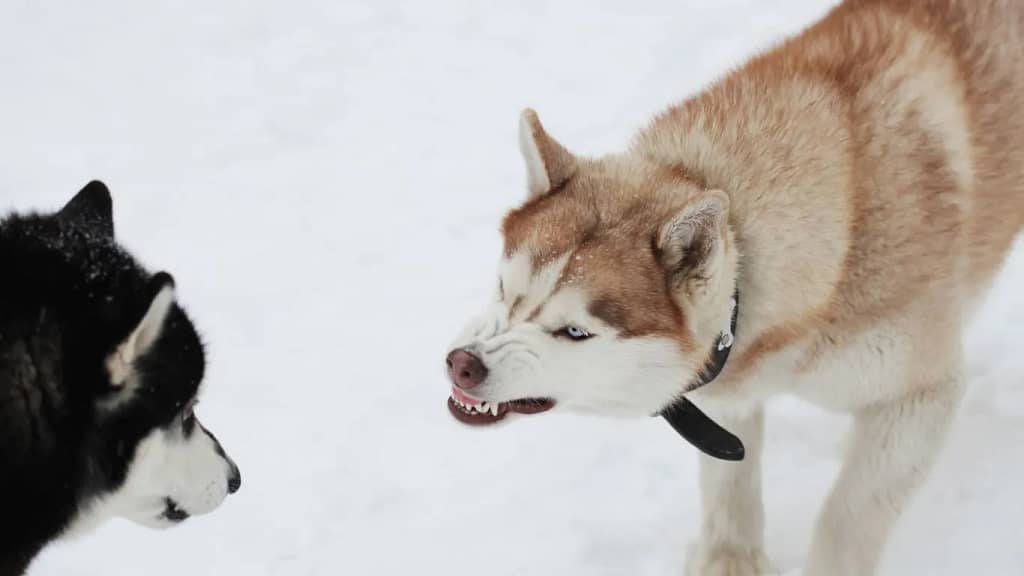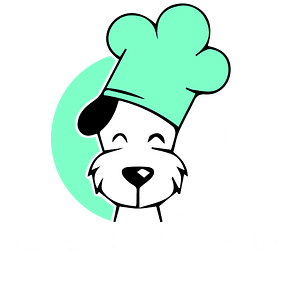Many dogs love to play with their food, but sometimes that can be a problem – as you might have seen in your own home! When one of your dog’s friends comes over, they might want to ensure they get some of the tasty treats too.
However, this is not just painful for your dog; it can result in aggressive behaviour towards other dogs if they do not handle it well. Read on to learn what you should do if your dog has food aggression and how you can avoid these occurrences in the future.

Table of Contents
ToggleWhat Is Food Aggression?
Food aggression is when one dog becomes aggressive towards another dog or human over food. It can be a severe problem and lead to fights between the dogs. You can do several things to try and prevent this from happening, including teaching your dog how to share food, providing them with different types of food, and training them not to be food aggressive.
What Are The Causes Of Food Aggression
Food aggression is a problem that can arise in any dog, regardless of breed or size. There are many possible causes, but most cases are due to one or more of the following:
1. Lack of training and discipline. Dogs who don’t receive consistent training and punishment often become aggressive when they’re food-motivated. It means you must regularly reinforce good behaviour with rewards (food, etc.) and punish bad behaviour with timeouts or physical discipline.
2. Poor nutrition. Dogs not getting enough nutrients from their food will often become aggressive when they see others eating. Ensure your dog eats a proper diet with enough protein, vitamins, and minerals.
3. Genetics. Some dogs are simply more aggressive around food than others, and there’s nothing that you can do to change this. Suppose your dog has a history of aggression towards people or other animals. In that case, it may be best to consult with a veterinary specialist before trying to change his diet or training methods.
How To Stop A Food-Aggressive Dog
Dogs frequently experience food aggression, which can be highly destructive. You can try to do some little things if your dog is hostile toward other dogs to curb the behaviour.
First, make sure that your dog has enough food and water. Dogs that are hungry or thirsty are usually less aggressive. If your dog is aggressive towards other dogs, it may also be because he is not getting enough food or water.
Next, try to teach your dog some basic obedience commands. It will help when he should stay away from other dogs and when he should greet them peacefully. You can also start training your dog using positive reinforcement techniques, such as giving him treats whenever he doesn’t engage in aggressive behaviour toward other dogs.
Finally, keep an eye on your dog’s temperament and socialisation throughout his lifetime. If you see your dog showing signs of more aggressive as he gets older,
The Food Aggression In Dogs Toward Humans
Food aggression in dogs toward humans can be a severe problem. Extreme cases can even lead to violence and even death. If you’re worried that your dog is exhibiting signs of food aggression, here are five things to watch for:
1. Engagement in Aggressive Behaviour Toward People or Other Pets: This is dogs’ most common indicator of food aggression. Your dog will typically become territorial and aggressive when they see another animal (or person) eating from the same dish as they are.
2. Isolating Himself From Humans: Dogs who exhibit food aggression may begin to avoid people entirely or become very shy around them. They may also start to groom excessively or bite people when they get too close.
3. Destroying Property Associated With Human Food Intake: Dogs who are aggressive towards humans may start to rip open packaging, destroy food bowls and furniture, or attack people when they come home with groceries.
4. Displaying Unprovoked Aggression Toward People When There’s No Food In Sight: Some aggressive dogs towards other animals may also become violent towards humans when there’s no obvious food source nearby. It could include biting, scratching, and charging at people without warning.
5. Seizing Objects That Are Associated With Human Food Intake: Dogs who are aggressive towards humans may try to snatch bags of groceries from their owners’ hands, jump up on counters to retrieve dropped utensils, or paw at bowls of cereal
How To Stop Food Aggression In Dogs Toward Cats
It’s important to remember that food aggression is not just a cat problem. It’s also a common issue for dogs. Food aggression can occur when one dog sees another dog eating its food and feels threatened or attacked.
A Few Things You Can Do To Stop Food Aggression In Your Dog:
1) Make sure all of your dog’s meals are evenly divided. It will help them feel less threatened and more likely to relax around other dogs during mealtime.
2) Feed your dog separately from other pets. That will help keep them from feeling territorial over their food and hopefully prevent aggressive behaviour.
3) Use positive reinforcement training methods to teach your dog that approaching other dogs while they’re eating is not a good idea. That will help them understand that the best way to get their food is through peaceful means.
How To Punish Food Aggression In Dogs
You can do a few things to punish food aggression in dogs. One option is to withhold food altogether. If your dog is usually fed twice a day, try feeding him once a day and rewarding him for good behaviour.
Another option is to give your dog some human-grade deterrent, such as bitter apple spray or citronella oil capsules. Be sure to use these sparingly, as they can be unpleasant to smell and taste. Finally, you can use physical punishment such as scolding, barking therapy, or corrections with a leash.
Conclusion
Food aggression toward other dogs can be a severe problem, and it’s essential to address it. If you’re having problems with your dog eating or chasing other animals,
First, ensure you provide your dog with plenty of appropriate nutritional food options.
Second, be consistent in training your dog not to eat or chase objects that aren’t food. Finally, establish rules around when and where your dog is allowed to play. For example, setting some boundaries may also help stop the behavior from happening in future situations.

